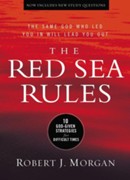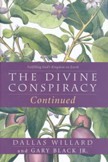The Q Hypothesis and How It Impacts the Gospels In addition to the four gospels, scholars often refer to what they call Q, which stands for the German word Quelle, or “source.” Because of similarities in language and content, it has traditionally been assumed that Matthew and Luke drew upon Mark’s earlier gospel in writing their own. In addition, scholars have said that Matthew and Luke also incorporated some material from this mysterious Q, material that is absent from Mark. “What exactly is Q?” I asked Craig Blomberg. Blomberg is widely considered one of the country’s foremost authorities on the biographies of Jesus, which are called the four gospels. He received his doctorate in New Testament from Aberdeen University in Scotland, later serving as a senior research fellow for Tyndale House at Cambridge University in England, where he was part of an elite group of international scholars that produced a series of acclaimed works on Jesus. He is currently a professor of New Testament at Denver Seminary. “It’s nothing more than a hypothesis,” he replied, again leaning back comfortably in his chair. “With few exceptions, it’s just sayings or teachings of Jesus, which once may have formed an independent, separate document. “You see, it was a common literary genre to collect the sayings of respected teachers, sort of as we compile the top music of a singer and put it into a ‘best of’ album. Q may have been something like that. At least that’s the theory.” But if Q existed before Matthew and Luke, it would constitute early material about Jesus. Perhaps, I thought, it can shed some fresh light on what Jesus was really like. “Let me ask this,” I said. “If you isolate just the material from Q, what kind of picture of Jesus do you get?” Blomberg stroked his beard and stared at the ceiling for a moment as he pondered the question. “Well, you have to keep in mind that Q was a collection of sayings, and therefore it didn’t have the narrative material that would have given us a more fully orbed picture of Jesus,” he replied, speaking slowly as he chose each word with care. “Even so, you find Jesus making some very strong claims—for instance, that he was wisdom personified and that he was the one by whom God will judge all humanity, whether they confess him or disavow him. A significant scholarly book has argued recently that if you isolate all the Q sayings, one actually gets the same kind of picture of Jesus—of someone who made audacious claims about himself—as you find in the gospels more generally.” I wanted to push him further on this point. “Would he be seen as a miracle worker?” I inquired. “Again,” he replied, “you have to remember that you wouldn’t get many miracle stories per se, because they’re normally found in the narrative, and Q is primarily a list of sayings.” He stopped to reach over to his desk, pick up a leather-bound Bible, and rustle through its well-worn pages. “But, for example, Luke 7:18–23 and Matthew 11:2–6 say that John the Baptist sent his messengers to ask Jesus if he really was the Christ, the Messiah they were waiting for. Jesus replied in essence, ‘Tell him to consider my miracles. Tell him what you’ve seen: the blind see, the deaf hear, the lame walk, the poor have good news preached to them.’ “So even in Q,” he concluded, “there is clearly an awareness of Jesus’ ministry of miracles.” Blomberg’s mention of Matthew brought to mind another question concerning how the gospels were put together. “Why,” I asked, “would Matthew—purported to be an eyewitness to Jesus—incorporate part of a gospel written by Mark, who everybody agrees was not an eyewitness? If Matthew’s gospel was really written by an eyewitness, you would think he would have relied on his own observations.” Blomberg smiled. “It only makes sense if Mark was indeed basing his account on the recollections of the eyewitness Peter,” he said. “As you’ve said yourself, Peter was among the inner circle of Jesus and was privy to seeing and hearing things that other disciples didn’t. So it would make sense for Matthew, even though he was an eyewitness, to rely on Peter’s version of events as transmitted through Mark.” | 
